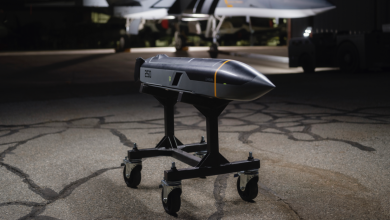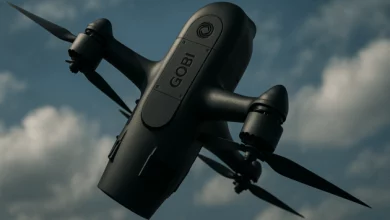SPHEREx space telescope begins capturing entire sky

Launched on March 11, NASA’s SPHEREx space observatory has spent the last six weeks undergoing checkouts, calibrations, and other activities to ensure it is working as it should. Now it’s mapping the entire sky—not just a large part of it—to chart the positions of hundreds of millions of galaxies in 3D to answer some big questions about the universe.
On May 1, the spacecraft began regular science operations, which consist of taking about 3,600 images per day for the next two years to provide new insights about the origins of the universe, galaxies, and the ingredients for life in the Milky Way.
“Thanks to the hard work of teams across NASA, industry, and academia that built this mission, SPHEREx is operating just as we’d expected and will produce maps of the full sky unlike any we’ve had before,” said Shawn Domagal-Goldman, acting director of the Astrophysics Division at NASA Headquarters in Washington.
“This new observatory is adding to the suite of space-based astrophysics survey missions leading up to the launch of NASA’s Nancy Grace Roman Space Telescope. Together with these other missions, SPHEREx will play a key role in answering the big questions about the universe we tackle at NASA every day.”
From its perch in Earth orbit, SPHEREx peers into the darkness, pointing away from the planet and the sun. The observatory will complete more than 11,000 orbits over its 25 months of planned survey operations, circling Earth about 14½ times a day.
It orbits Earth from north to south, passing over the poles, and each day it takes images along one circular strip of the sky. As the days pass and the planet moves around the sun, SPHEREx’s field of view shifts as well, so that after six months, the observatory will have looked out into space in every direction.
When SPHEREx takes a picture of the sky, the light is sent to six detectors that each produces a unique image capturing different wavelengths of light. These groups of six images are called an exposure, and SPHEREx takes about 600 exposures per day.
When it’s done with one exposure, the whole observatory shifts position—the mirrors and detectors don’t move as they do on some other telescopes. Rather than using thrusters, SPHEREx relies on a system of reaction wheels, which spin inside the spacecraft to control its orientation.
Hundreds of thousands of SPHEREx’s images will be digitally woven together to create four all-sky maps in two years. By mapping the entire sky, the mission will provide new insights about what happened in the first fraction of a second after the big bang. In that brief instant, an event called cosmic inflation caused the universe to expand a trillion-trillion-fold.
“We’re going to study what happened on the smallest-sized scales in the universe’s earliest moments by looking at the modern universe on the largest scales,” said Jim Fanson, the mission’s project manager at NASA’s Jet Propulsion Laboratory in Southern California. “I think there’s a poetic arc to that.”
Cosmic inflation subtly influenced the distribution of matter in the universe, and clues about how such an event could happen are written into the positions of galaxies across the universe. When cosmic inflation began, the universe was smaller than the size of an atom, but the properties of that early universe were stretched out and influence what we see today.
No other known event or process involves the amount of energy that would have been required to drive cosmic inflation, so studying it presents a unique opportunity to understand more deeply how our universe works.
“Some of us have been working toward this goal for 12 years,” said Jamie Bock, the mission’s principal investigator at Caltech and JPL. “The performance of the instrument is as good as we hoped. That means we’re going to be able to do all the amazing science we planned on and perhaps even get some unexpected discoveries.”





